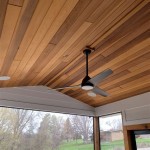A Guide To Painting Your Basement Ceiling
Painting a basement ceiling can drastically improve the overall aesthetic of a basement space. A fresh coat of paint can brighten a room, hide imperfections, and even contribute to a more finished and appealing look. However, painting a basement ceiling presents unique challenges compared to painting other interior surfaces. Moisture levels, the presence of pipes and ductwork, and the type of ceiling material all need careful consideration. This guide offers a detailed overview of the process, helping you achieve a professional-looking and long-lasting finish.
Preparation: Essential Steps Before Painting
Proper preparation is the most critical step in ensuring a successful paint job. A thorough preparation not only guarantees better paint adhesion but also prevents future problems like peeling or mold growth. This stage involves cleaning, repairing, and priming the ceiling surface.
Cleaning the Ceiling: Begin by thoroughly cleaning the basement ceiling. Dust, dirt, and cobwebs can accumulate over time, hindering paint adhesion. Use a vacuum cleaner with a brush attachment to remove loose debris. For heavier grime or mold, a mild detergent solution and a sponge or cloth may be required. Ensure the ceiling is completely dry before proceeding.
Repairing Damage: Inspect the ceiling for any cracks, holes, or water stains. Repairing these imperfections before painting will result in a smoother, more uniform finish. For small cracks, use spackle or joint compound to fill the gaps. Allow the compound to dry completely, then sand it smooth with fine-grit sandpaper. For larger holes, you may need to patch the ceiling with drywall or plaster, depending on the existing ceiling material. Water stains indicate a potential moisture problem that needs to be addressed before painting. Locate and repair the source of the leak to prevent the stains from reappearing.
Protecting the Surrounding Area: Painting a ceiling can be a messy process. Cover the floor with drop cloths to protect it from paint splatters. Use painter's tape to mask off walls, pipes, ductwork, and any other fixtures that you don't want to paint. This will create clean lines and prevent paint from getting on unwanted surfaces.
Priming the Ceiling: Priming is an essential step, especially for basement ceilings. Primer helps to seal the surface, improve paint adhesion, and prevent stains from bleeding through. Choose a high-quality primer specifically designed for interior use and suitable for the type of ceiling material. For ceilings prone to moisture, consider using a mold-resistant primer. Apply the primer evenly, following the manufacturer's instructions. Allow the primer to dry completely before painting.
Selecting the Right Paint: Type, Finish, and Color
Choosing the appropriate paint is crucial for achieving the desired aesthetic and ensuring the longevity of the paint job. The type of paint, its finish, and its color all contribute to the final result and impact the overall ambiance of the basement.
Type of Paint: For basement ceilings, moisture-resistant paint is generally recommended. Latex paint, known for its durability and ease of cleaning, is a popular choice. Acrylic latex paints offer even better moisture resistance and are less prone to cracking. Specifically formulated paints designed for bathrooms and kitchens are also suitable for basements, as they contain mildewcides that help prevent mold growth. Avoid oil-based paints, as they can be more susceptible to moisture damage and may emit strong odors.
Paint Finish: The paint finish refers to the level of sheen or gloss. For basement ceilings, a flat or matte finish is often preferred. Flat finishes offer the best hiding power, minimizing imperfections and creating a smooth, uniform look. They also tend to absorb light, which can help to brighten a basement space. Avoid glossy or semi-gloss finishes, as they tend to highlight imperfections and can reflect light in an undesirable way. An eggshell finish is a compromise between flat and semi-gloss, offering some level of durability and sheen without being overly reflective.
Paint Color: The choice of paint color can significantly impact the perception of space and light in a basement. Lighter colors, such as white, off-white, and light grays, reflect more light and can make the basement feel brighter and more spacious. Darker colors, while potentially adding drama, can make the basement feel smaller and more enclosed. Consider the existing lighting in the basement when choosing a paint color. If the basement receives limited natural light, opting for a lighter color is generally recommended. Test paint samples on a small section of the ceiling before committing to a full paint job to ensure the color is suitable for the space.
Specialty Paints: In some cases, specialty paints may be beneficial. Mold-resistant paints, as previously mentioned, can be useful in basements prone to moisture. Acoustic paints can help to reduce noise levels, which may be desirable if the basement is used as a home theater or recreation room. Thermal paints can offer some level of insulation, potentially helping to regulate the temperature in the basement.
Painting Techniques and Tools: Achieving a Professional Finish
Using the correct painting techniques and tools is vital for achieving a professional-looking finish on a basement ceiling. This includes selecting the right type of roller, brush, and application methods.
Tools and Equipment: A high-quality paint roller with an extension pole is essential for painting a ceiling. The nap length of the roller cover should be appropriate for the texture of the ceiling. For smooth ceilings, a roller cover with a nap length of 3/8 inch is typically sufficient. For textured ceilings, a roller cover with a longer nap length (1/2 inch or 3/4 inch) may be necessary to ensure even coverage. A paint tray with a liner is needed to hold the paint. A paint brush is useful for cutting in edges and painting around pipes and fixtures. A ladder or scaffolding may be required to reach higher areas of the ceiling. Eye protection, such as goggles or safety glasses, should be worn to protect against paint splatters. A respirator or dust mask is recommended to avoid inhaling paint fumes and dust.
Painting Techniques: Begin by cutting in the edges of the ceiling with a paint brush. This involves painting a narrow strip along the walls, pipes, and other fixtures. Cutting in creates a clean line and prevents the roller from bumping into these surfaces. Once the edges are cut in, use the roller to paint the main surface of the ceiling. Load the roller with paint, but avoid over saturating it. Use long, even strokes to apply the paint, overlapping each stroke slightly to ensure complete coverage. Avoid pressing too hard on the roller, as this can cause the paint to drip. Work in small sections at a time to prevent the paint from drying out before you can blend it in. Apply a second coat of paint after the first coat has dried completely. The second coat will provide better coverage and durability. Allow the paint to dry completely before removing the painter's tape and drop cloths.
Addressing Obstacles: Basement ceilings often have pipes, ductwork, and other obstacles that can make painting challenging. Use a paint brush to carefully paint around these obstacles. For hard-to-reach areas, a small brush or a foam brush may be helpful. Consider using a paint sprayer for painting ceilings with intricate details or a lot of obstructions. Paint sprayers can provide a more even and efficient application, but they require more preparation and cleanup.
Ventilation: Ensure the basement is well-ventilated during and after painting. Open windows and doors, and use fans to circulate the air. This will help to reduce paint fumes and speed up the drying process. Follow the manufacturer's instructions regarding drying times and ventilation requirements.
By carefully following these steps, anyone can achieve a professional-looking paint job on their basement ceiling, transforming the space into a brighter, more inviting, and aesthetically pleasing area.

How To Paint An Exposed Basement Ceiling Black Diy Building Bluebird

How To Paint An Exposed Basement Ceiling Black Diy Building Bluebird

How To Paint An Unfinished Basement Ceiling Semigloss Design

How To Paint An Unfinished Basement Ceiling Semigloss Design

Complete Guide To Painting An Exposed Basement Ceiling Black Enthralling Gumption

How To Paint An Exposed Ceiling Basement Renovation

How To Paint An Unfinished Basement Ceiling Semigloss Design

Painting Basement Walls And Ceiling

How To Paint An Exposed Basement Ceiling Black Diy Building Bluebird

How To Paint An Unfinished Basement Ceiling Semigloss Design
Related Posts








